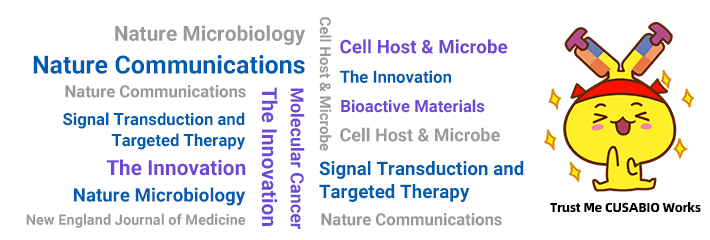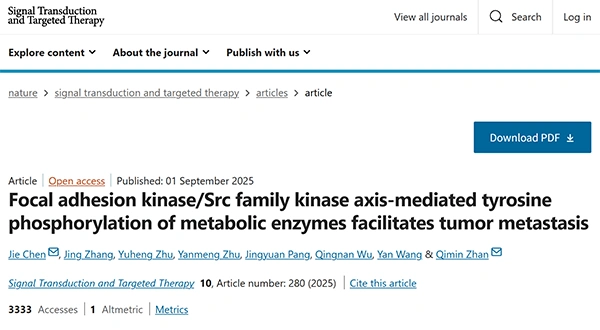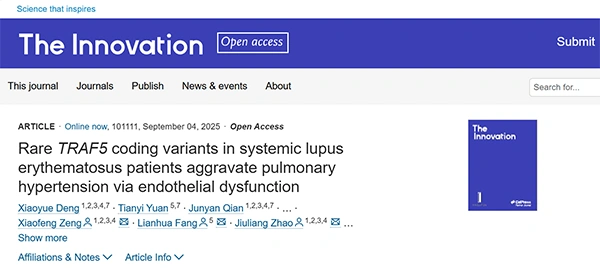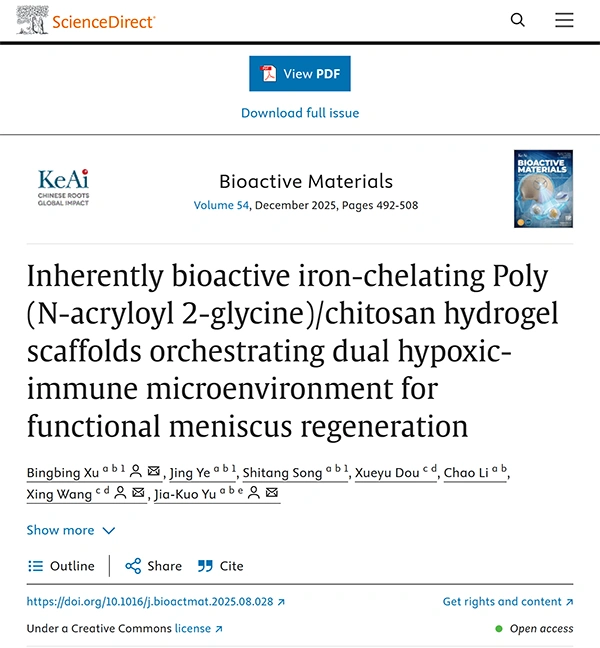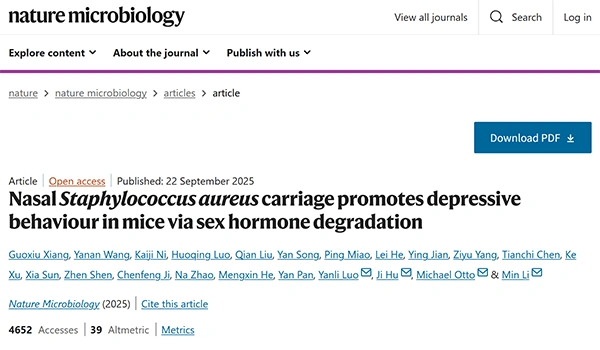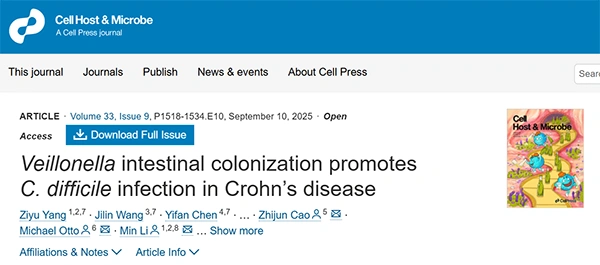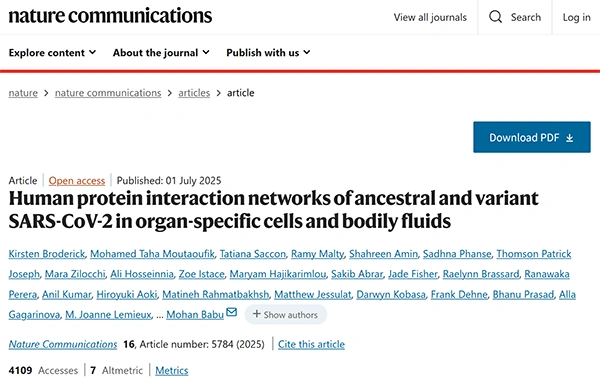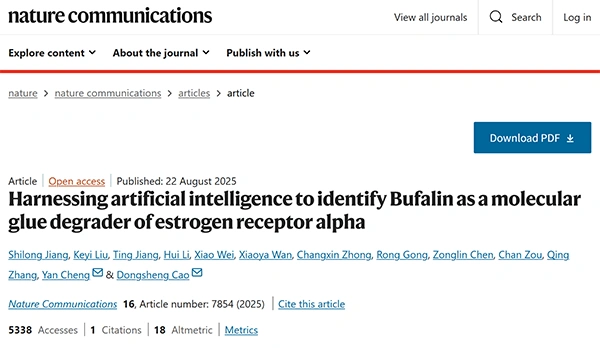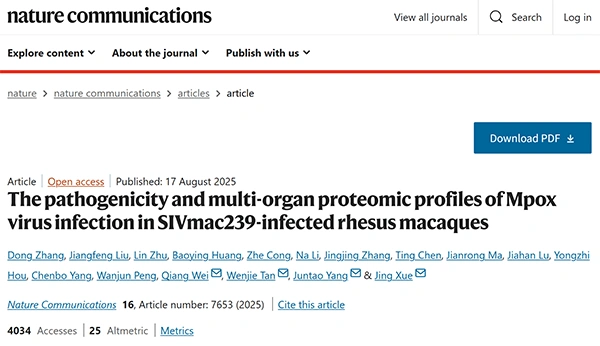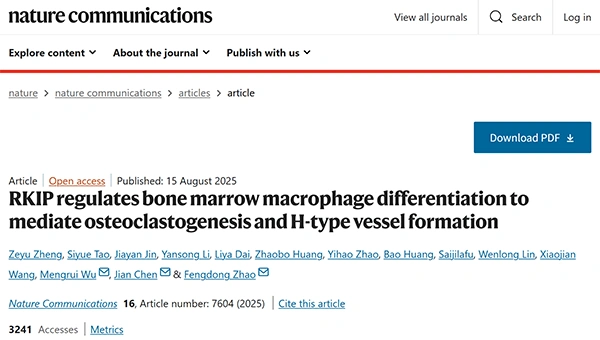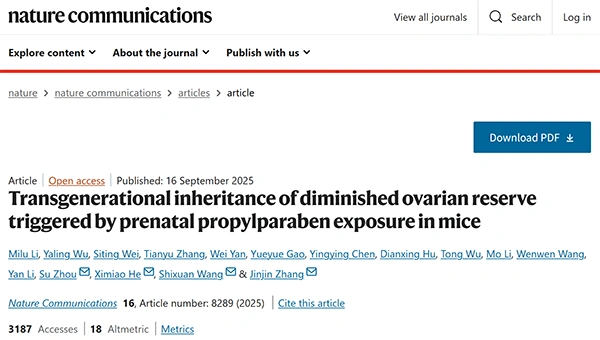Thank you for your continued support of CUSABIO! In Q3, articles related to CUSABIO products were published in excess of 800. The total number of articles has now reached 27,500.
Thank you for choosing CUSABIO research products on your scientific research journey. Your trust and support are deeply appreciated. We will continue to work hard to provide you with even better products and services.
Now, let's take a moment to share these wonderful research results.
CUSABIO Quarterly Citation Review
01 Focal adhesion kinase/Src family kinase axis-mediated tyrosine phosphorylation of metabolic enzymes facilitates tumor metastasis
Impact Factor: 52.7
Journal Name: Signal Transduction and Targeted Therapy
CUSABIO Citation Product:
Recombinant Human Fructose-bisphosphate aldolase A (ALDOA); CSB-EP001583HUa0
Research Highlights:
This study shows that the FAK/SFK axis drives ESCC lymph node metastasis via tyrosine phosphorylation of metabolic enzymes ACLY and ALDOA, enhancing their activity and activating CDK7/9 or Yamanaka factors in primary vs. metastatic tumors. The natural compound quercetagitrin selectively inhibits ALDOA phosphorylation, suppressing metastasis and synergizing with FAK/SFK inhibitors, offering a promising anti-metastatic strategy.
02 Rare TRAF5 coding variants in systemic lupus erythematosus patients aggravate pulmonary hypertension via endothelial dysfunction
Impact Factor: 25.7
Journal Name: The Innovation
CUSABIO Citation Product:
Mouse anti-Smith antibody ELISA Kit; CSB-E15976m
Research Highlights:
This study identified rare loss-of-function TRAF5 variants in 3.78% of SLE-PAH patients from the CSTAR cohort. TRAF5 deficiency exacerbated pulmonary vascular remodeling in mouse models, with single-cell RNA-seq revealing downregulated TRAF5 in arterial endothelial cells, disrupted BMP/TGF-β signaling, and increased apoptosis. Endothelium-specific TRAF5 overexpression attenuated PAH in model mice, highlighting its therapeutic potential.
03 Inherently bioactive iron-chelating Poly (N-acryloyl 2-glycine)/chitosan hydrogel scaffolds orchestrating dual hypoxic-immune microenvironment for functional meniscus regeneration
Impact Factor: 20.3
Journal Name: Bioactive Materials
CUSABIO Citation Product:
Mouse stromal cell derived factor 1α(SDF-1α/SDF1A)ELISA kit; CSB-EQ027494MO
Mouse Vascular Endothelial cell Growth Factor,VEGF ELISA KIT; CSB-E04756m
Research Highlights:
This study presents a bioactive iron-chelating PACG/CS hydrogel scaffold that orchestrates a dual hypoxic-immune microenvironment for functional meniscus regeneration. By chelating Fe³⁺ ions, the scaffold activates HIF-1α signaling, induces a hypoxic niche, and modulates macrophage polarization, enhancing stem cell recruitment and chondrogenic differentiation. Peripheral blood-derived MSCs (PBMSCs) showed superior regenerative potential compared to bone marrow MSCs (BMSCs). Combined with personalized 3D printing, the scaffold reconstructed heterogeneous meniscal structures, restored biomechanical properties, and protected articular cartilage in vivo.
05 Veillonella intestinal colonization promotes C. difficile infection in Crohn's disease
Impact Factor: 18.7
Journal Name: Cell Host & Microbe
CUSABIO Citation Product:
Mouse Tumor necrosis factor α,TNF-α ELISA KIT; CSB-E04741m
Research Highlights:
This study shows oral commensal Veillonella parvula enriches in Crohn’s disease (CD) gut and worsens Clostridioides difficile infection (CDI). Its LPS triggers TLR4-MAPK-c-Jun/c-Fos signaling, suppresses ileal bile acid transporter ASBT, increases luminal bile acids, and promotes spore germination and recurrence, offering a novel therapeutic target for CDI in CD.
06 Human protein interaction networks of ancestral and variant SARS-CoV-2 in organ-specific cells and bodily fluids
Impact Factor: 15.7
Journal Name: Nature Communications
CUSABIO Citation Product:
Recombinant Severe acute respiratory syndrome coronavirus 2 Replicase polyprotein 1ab (rep), partial;CSB-BP3420GND
Research Highlights:
This study maps human protein interactomes of ancestral and variant SARS-CoV-2 across organ-specific cells and saliva, revealing NSP3-induced coagulation defects via fibrinogen binding and immune evasion through IFIT5 de-ISGylation. Three antiviral peptides targeting the RBD were developed, effectively blocking ACE2 binding and inhibiting infection by both ancestral and variant strains, offering promising broad-spectrum antiviral candidates.
07 Harnessing artificial intelligence to identify Bufalin as a molecular glue degrader of estrogen receptor alpha
Impact Factor: 15.7
Journal Name: Nature Communications
CUSABIO Citation Product:
Recombinant Human Steroid 17-alpha-hydroxylase/17,20 lyase (CYP17A1); CSB-EP006392HU
Recombinant Human Estrogen receptor (ESR1), partial; CSB-YP007830HU
Research Highlights:
This study employs AI to identify bufalin as a molecular glue that degrades ERα by enhancing its interaction with E3 ligase STUB1, promoting proteasomal degradation. Bufalin selectively binds to Arg394 of ERα, suppresses ER+ breast cancer cell growth, and overcomes tamoxifen resistance in vitro, in vivo, and in patient-derived organoids, offering a promising therapeutic strategy with favorable safety.
08 The pathogenicity and multi-organ proteomic profiles of Mpox virus infection in SIVmac239-infected rhesus macaques
Impact Factor: 15.7
Journal Name: Nature Communications
CUSABIO Citation Product:
Monkey serum amyloid A1 (SAA1) ELISA kit; CSB-EL020656RH
Research Highlights:
Using SIV-MPXV co-infected macaques to mimic HIV-mpox co-infection, this study shows co-infection worsens skin lesions, increases multi-organ viral loads, and impairs CD8+T cell and neutralizing antibody responses. Proteomic/phosphoproteomic analyses reveal activated immune-inflammatory pathways, viral exploitation of cell cycle/DNA replication, and CDK-PLK axis as a potential therapeutic target, offering key insights for co-infection mechanisms and interventions.
09 RKIP regulates bone marrow macrophage differentiation to mediate osteoclastogenesis and H-type vessel formation
Impact Factor: 15.7
Journal Name: Nature Communications
CUSABIO Citation Product:
Mouse cross linked C-telopeptide of type I collagen (CTX-Ⅰ) ELISA Kit; CSB-E12782m
Mouse procollagen Ⅰ N-terminal peptide,PⅠNP ELISA Kit; CSB-E12775m
Research Highlights:
This study reveals RKIP regulates bone homeostasis by directing bone marrow macrophage fate: cytoplasmic RKIP binds ARHGAP to prevent CDC42 inactivation, enhancing osteoclastogenesis, while nuclear RKIP bridges VHL and HIF-1α to promote its degradation, suppressing angiogenesis. RKIP deletion or inhibition reduces osteoclasts, increases pro-angiogenic macrophages, boosts H-type vessel formation, markedly elevates bone mass, and rescues ovariectomy-induced osteoporosis, offering a novel therapeutic target.
10 Transgenerational inheritance of diminished ovarian reserve triggered by prenatal propylparaben exposure in mice
Impact Factor: 15.7
Journal Name: Nature Communications
CUSABIO Citation Product:
Human anti-Mullerian hormone (AMH) ELISA kit; CSB-E12756h
Research Highlights:
Prenatal propylparaben exposure triggers transgenerational DOR in mice via persistent Rhobtb1 hypomethylation in oocytes, elevating RhoBTB1 to de-repress FGF18 through ubiquitination, activating MAPK and granulosa apoptosis; similar hypomethylation occurs in DOR patients' blood. Methyl-donor diet rescues F1–F3 phenotypes, revealing DOR as an inheritable epigenetic disorder and offering non-invasive biomarkers and nutritional intervention strategies.
► Click here to view more citations
CUSABIO team. CUSABIO Quarterly Citation Review: 800 New Product Citations in Q3, Total Citations Hit 27,500!. https://www.cusabio.com/c-21262.html

